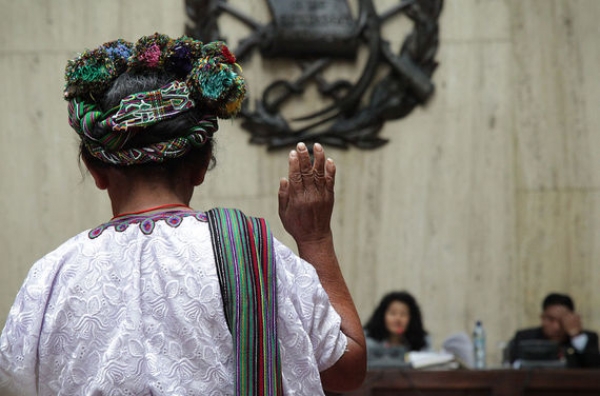The International Center for Transitional Justice (ICTJ) has reported on the Guatemalan genocide.
The report raises awareness of the subordination of the Ixil Mayans in Guatemala under the dictatorship of Fernando Romeo Lucas García, followed by José Efraín Ríos Montt. During the regime of both these men the Mayans were in danger. The Mayans had no escape from the torture being brought upon them, since it was their own leaders who committed these crimes. This massacre brought history to Guatemala, making it the first country that a head of state would be charged for genocide in their own country.
The indigenous always lived in subordinated conditions, but such situation worsened when right-wind military dictatorships came to power from mid '50s and even more during the civil war (1962-1996), during which 200,000 mayans were murdered. García and Montt commanded the military to burn villages, rape, torture, kidnap, and murder indigenous communities. The targets of this genocide were the Mayan Ixils, who had few rights and were seen as subordinate due to their physical appearance, such as darker skin pigmentation and physical features different than the colonizers. The colonizers would negotiate with the army to maintain their status quo and proceed with their monopolies, bringing on hardship for the Ixils.
Leftist guerrillas became involved in search for justice and signed a Peace Accord with the United Nations in 1996; however, only proposals were successful. One positive outcome of this Peace Accord was the Commission for Historical Clarification (CEH); they were responsible for investigating the crimes committed under the regime of Garcia and Montt. Furthermore, the National Reparations Plan, which would manage reparations to the victims of all these wrong doings, was another positive outcome of the Peace Accords. Many humanitarians started to reach out to the Ixil victims to help them achieve justice. One well-known supporter is Paul Seils, vice president of the International Center for Transitional Justice. Seils advocated for the focus be on what these victims believed was justice and that the national justice system should be tested on it trustworthiness. Paul Seils understood that it would be difficult for the Mayans to trust the judiciary system after experiencing so much corruption. They became well aware that if they testified, their lives and the lives of their loved ones would be at risk. Although, they became conscious of this, they proceeded with the trials. By having the support of the Association for Justice and Reconciliation, Center for Legal Action in Human Rights, and having ethical judges, such as Yassmin Barrios, lead to the survivors and the victims to achieve justice.
To read the entire report, please visit:
https://www.ictj.org/sites/default/files/subsites/guatemala-genocide-impunity-eclipse/




